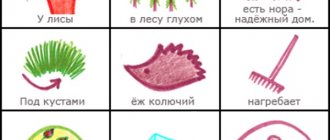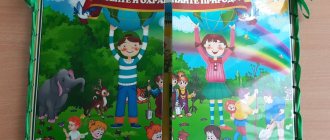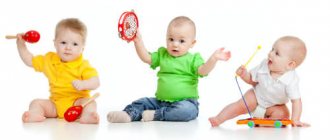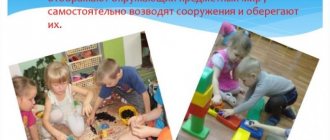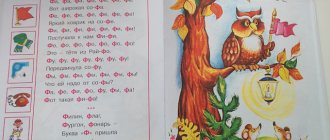Principles of operation of mnemonic tables
Note that to encode a poem, even the simplest image for a line or an entire quatrain is sufficient. It is not necessary to be a professional artist to depict the objects or actions described in the work. In a mnemonic table it is possible to schematically display the entire world around us: natural phenomena, events, signs of objects, actions of characters. The method of mnemonic tables has been developed in detail, with the necessary instructions, which does not cause difficulties in application.
The scope of the article does not imply an extended description of the methodology, so we will focus on its main principles. Work begins with the construction of a mnemonic square that corresponds to a specific word. For example, the poem “White Birch” by Sergei Yesenin is memorized. Using the word “birch,” the teacher suggests considering the symbolic designation of a tree. This should be a simple and accessible drawing for children that they can complete on their own. Then we do the same with other words, for example, “window”, “snow”, “branches”, etc. So children begin to gradually understand what the symbol of the word means.
At the beginning of training, colored mnemonic tables are offered, since color images quickly appear in children’s memory: snow is white, spruce branches are green, the sky is blue. Then, as specific skills in depicting objects are mastered, black and white symbols are used so as not to be distracted by their brightness.
Subsequent work on the poem involves a gradual transition from mnemonic squares to mnemonic tracks, which designate entire poetic phrases. This is how the poem is gradually memorized and reproduced using conventional symbols.
After mastering the necessary initial knowledge about symbols, children are led to actions with mnemonic tables. The number of cells in the table depends on the complexity and size of the text, as well as on the age of the students. Thus, the entire poem is recorded schematically.
Teachers note that as they learn, children are actively involved in creating their own scheme. After this, they reproduce the entire text from memory, using only a symbolic image.
What mnemonics are the best and suitable for children in grades 1-4?
A small child under 3 years old has a sponge's memory.
Absorbs everything. Then she becomes selective, subject to interest. By age 7, memory is formed, but it is still involuntary. And to study in primary school, a child needs help, the so-called mnemonics for children in grades 1 - 4. After all, you need to quickly and a lot memorize, learn poems, rules, and master the program. And not only the program. Almost all children go to additional clubs, where memory is simply necessary.
And then more. The volume of material being studied is increasing and something urgently needs to be done with memorization skills. And it is better for parents to immediately help their child learn to effectively memorize information using various special means.
In addition, using mnemonics, we “kill” several birds with one stone. We remember quickly, fun and a lot, retain information for a long time, develop memory and completely control the memorization process.
And most importantly, we train attention and thinking. These are the tools I want to share with you.
The content of the article:
Mnemonics in simple words
The simplest mnemonic techniques for children in grades 1-4
- The easiest way is rhyme and rhythm
- Where will the regroupings lead?
- These scary sequential associations
- Scribbles?
- Let's play with sound?
- Is this seat taken?
- How to learn poems dynamically?
- Where should I hang the word?
- We encrypt information
What is the best mnemonic technique?
Mnemonics based on fairy tales: a technique for preschool teachers
Memory training for children is also carried out by teachers in preschool educational institutions. In this case, reference diagrams and mnemonic tables are selected from the mnemonics. Education begins at one or two years of age, since during this period the baby already knows some fairy tales and can tell them. However, he often confuses characters from different fairy tales. Mnemonic tables will help you remember the main characters of a given fairy tale.
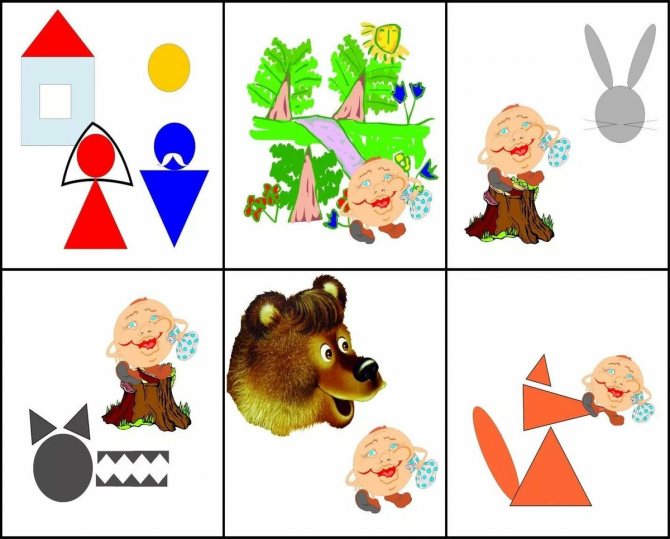
Mnemonic table based on the fairy tale “Kolobok”
Illustrations of fairy tale characters are placed in the table cells. The fairy tale “Kolobok” is especially convenient for teaching, since it has many characters.
Additional Information! For the youngest students, four cells or no more than nine are enough.
During the learning process, the teacher draws images in the cells of the table with the children. This is very exciting for children, and later they can begin to come up with such tables and images themselves.
Three-year crisis - advice to parents from a psychologist
Memory improves due to the constant encoding of information into pictures and vice versa, and is also reinforced verbally.
Methods for diagnosing the memory of preschoolers
Diagnosing memory in preschoolers using techniques is necessary to identify the effectiveness and adequacy of the training provided and to improve further educational techniques. After diagnosis, the development plan and the children’s learning model are adjusted.
Important! Diagnosing the memorization process in children at an early age will help to avoid possible violations in this process and take the necessary measures in time.
Memory techniques for preschoolers:
- Mastering the material
- Playback,
- Quality of information storage.
Visual, auditory and motor memory work during the diagnostic process.
Mnemonics in simple words
This name came to us from Ancient Greece. Mnemosyne is the mother of the muses and the goddess of memory. It is in her honor that most concepts related to memorization are called mnemonic.
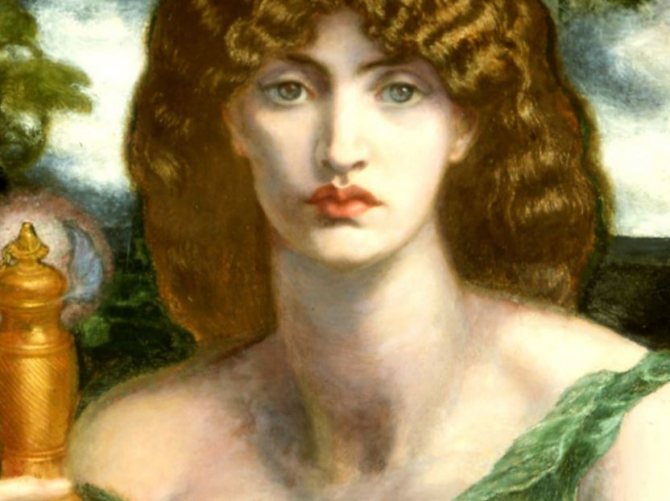
Having looked carefully at the goddess once, you will no longer be able to forget her) She is so memorable.
And mnemonics themselves are rules, tools and methods that help us improve our memory. Mnemonics does this by: organizing information, using associations, and mentally creating images.
For example, if we need to remember meaningful information, then this is easy to do. But with dates, phone numbers, multiplication tables, and vocabulary words, it’s better to resort to mnemonics. Unless the child has a photo memory, of course)
Read this article about the development of photo memory. Download free games for developing photographic memory here (links will open in a new tab).
It is also advisable to make sure that his attention is at the proper level. You can check it here (link will open in a new tab).
So we come to the concept of mnemonics) Mnemonics is the practical implementation of a specific means of mnemonics. What we specifically do to remember.
